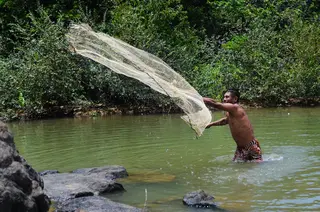Indigenous peoples and IUCN
IUCN has a long history of working with Indigenous peoples both to promote recognition of their rights at policy level and to support their conservation activities on the ground. IUCN endorsed the United Nations Declaration on the Rights of Indigenous Peoples (UNDRIP) in 2008 and regularly monitors and reports on its contributions to the implementation of the Declaration. IUCN Resolutions and field-based work emphasise Indigenous peoples' rights to the lands, territories and natural resources they have traditionally owned, occupied and used, and the need to ensure the full and effective participation of Indigenous peoples in all conservation initiatives and policy developments that affect them.
Together, the IUCN Human Rights in Conservation Team (HRCT) and the Commission on Environmental, Social and Economic Policy (CEESP) support IUCN in advancing Indigenous peoples self-determined priorities throughout policy fora, programmes and projects.















